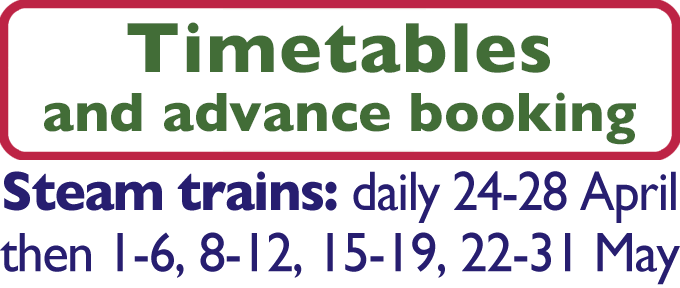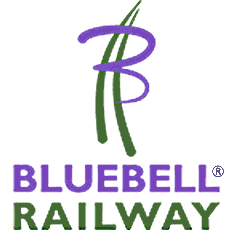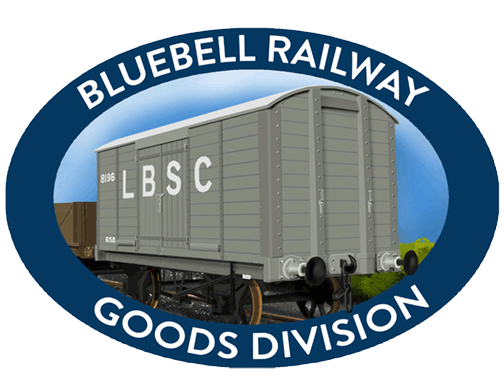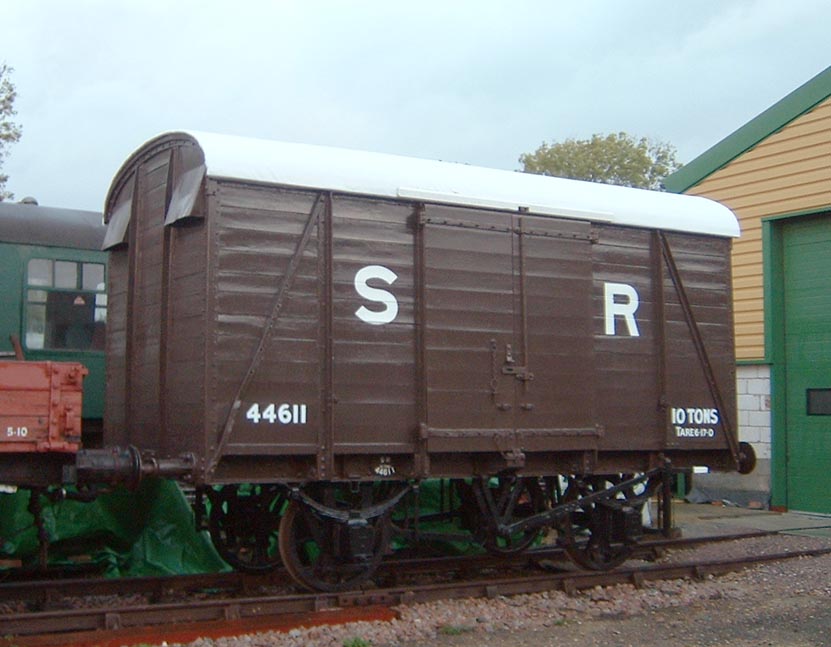At the "Grouping" of 1923, most goods were still carried in open wagons, protected by a tarpaulin
where necessary. Goods vans such as this were designed to carry goods that required greater security
and/or protection from the elements.
Built in the Southern Railway's workshops at Ashford (Kent) during week ending 26th. December 1931,
44611 was one of a lot of 450 covered goods vans to diagram 1429 and order A640 built at an average
cost of £142 each. Although the body was a standard SR type (developed from a SECR design -
see SECR No.15750), this batch of vans utilised ex-LSWR wheelsets,
bearings, axleboxes and springs. The 4 inch diameter journals on the ex-LSWR 9x4 wheelsets
necessitated a restricted load of 10 Tons. Later versions with standard 4 1/4 inch diameter journals
could carry 12 Tons. Fitted with a handbrake only, its tare weight is 6 tons 17cwt. 0q.
Throughout the 1950s, British Railways significantly increased the number of vacuum braked goods vans
in its fleet through both new build and conversion of older unfitted vans. However the riding quality
of older vehicles with a 9 feet wheelbase (such as 44611) necessitated a reduction in maximum speed
and made them less viable for conversion.
During the late 1950s and early 1960s, British Railways' market share of freight traffic steadily
declined. Public confidence had been shattered by a national rail strike in 1955, the first since the
General Strike of 1926. There had been changes in road regulation allowing lorries to travel at speeds
in excess of 30 m.p.h. on trunk roads. More lorries were appearing with the more efficient diesel
engine. The first stretch of the M1 motorway opened in 1959.
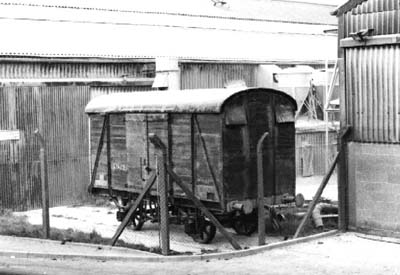 S44611 was found to be surplus to requirements and on 10th October 1962 British Railways sold and
delivered the van to Stacey & Co., a firm of wood flour millers at Langley (Bucks). It was
modified by them with an end door and tailboard for use as a mobile store, this use continuing even
after the main line rail connection had been severed (see the 1980 view, right, by Martin Allen).
44611 was purchased from the company by Martin Skrzetuszewski for the Bluebell Railway, arriving on
9th May 1980.
S44611 was found to be surplus to requirements and on 10th October 1962 British Railways sold and
delivered the van to Stacey & Co., a firm of wood flour millers at Langley (Bucks). It was
modified by them with an end door and tailboard for use as a mobile store, this use continuing even
after the main line rail connection had been severed (see the 1980 view, right, by Martin Allen).
44611 was purchased from the company by Martin Skrzetuszewski for the Bluebell Railway, arriving on
9th May 1980.
Initially, the tailboard was removed, the roof repaired and the vehicle was repainted, subsequently
being used for the storage of locomotive spares at Sheffield Park. When it was no longer needed for
this purpose, it was moved to Horsted Keynes and stored in the up yard sidings. The view below
(by Graeme Pettit) shows it in this latter location.
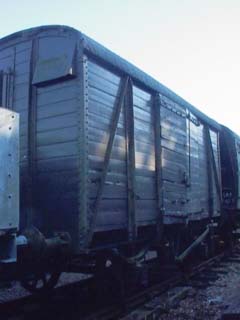 44611 was overhauled by a team of Bluebell volunteers at Horsted Keynes during the summer and early
autumn of 2004, with funding from the profits of the previous Christmas' mince pie sales plus a
substantial donation of good quality used timber. Details and
photographs of the work are here. New doors were made for the van. The timber of the floor and
lower parts of the body-sides was completely replaced, and the roof re-covered. The biggest work was
on the north end, where the door had been cut in the end. The restoration to SR condition included
replacing a missing steel end pillar with one from another scrapped van, fabricating a new steel
end-ventilator hood, and also replacing a buffer casting of incorrect pattern with one from a scrapped
wagon.
44611 was overhauled by a team of Bluebell volunteers at Horsted Keynes during the summer and early
autumn of 2004, with funding from the profits of the previous Christmas' mince pie sales plus a
substantial donation of good quality used timber. Details and
photographs of the work are here. New doors were made for the van. The timber of the floor and
lower parts of the body-sides was completely replaced, and the roof re-covered. The biggest work was
on the north end, where the door had been cut in the end. The restoration to SR condition included
replacing a missing steel end pillar with one from another scrapped van, fabricating a new steel
end-ventilator hood, and also replacing a buffer casting of incorrect pattern with one from a scrapped
wagon.
A decade after the original restoration the upper end planks at one end, which had been surviving originals, were replaced with new timber. Between August 2024 and January 2025, 44611 was given a light overhaul, dealing with body structure corrosion. The last original planks were now in need of replacement, and 37 new side-planks were machined from hardwood (Red Grandis) and the van given a complete repaint.
